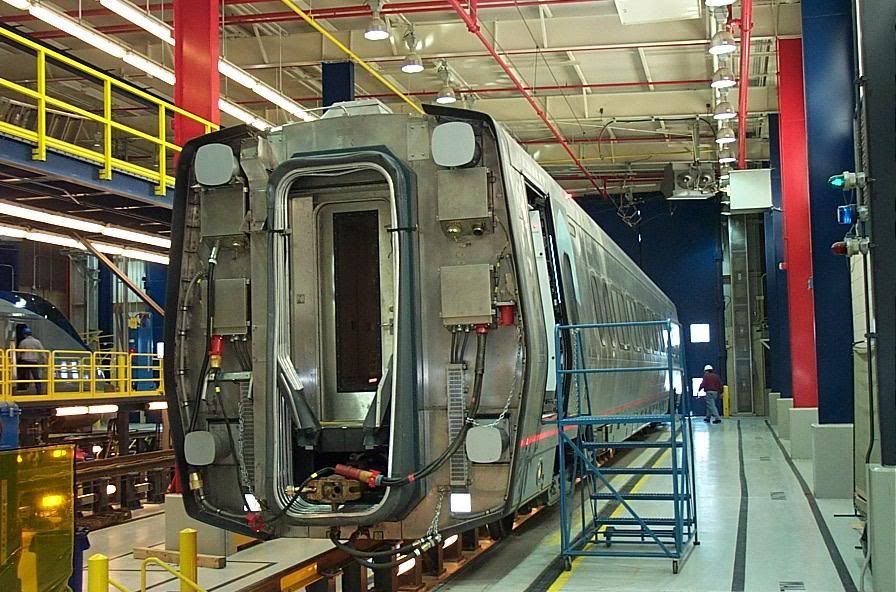ts drawgear end that came out, nothing link and pin , entire coupler pulled out of spring pack.
Acela pull-apart preliminary findings: FRA
Written by William C. Vantuono, Editor-in-Chief
Tweet
Acela pull-apart preliminary findings: FRA
The Federal Railroad Administration has issued preliminary findings on the Feb. 6 incident in which an Acela Express trainset experienced a separation between two cars at a speed of approximately 125 mph.
“On Tuesday, February 6, 2018 at approximately 05:58 am EST, Amtrak Acela Train No. 2150 with power car 2031 in the lead was traveling North on Main Track No. 2 when it separated between the 1st and 2nd cars (3215 and 3554) approaching Grace Interlocking at MP 61.8. The separation caused an undesired emergency brake application. The train was traveling 123 MPH when the emergency brake application was initiated. Timetable speed on Main Track No.2 is 125 MPH.
“There were 52 passengers onboard the train at the time. No injuries to passengers or crew have been reported. The 52 passengers were transferred to northbound Regional Train No. 180 at approximately 07:01 am EST, while the OBS crew was picked up by northbound Acela train 2100. The Conductor, Engineer, and Assistant Conductor all remained with the train.
“The [separation] between the 1st and 2nd cars (3215 and 3554) was approximately 4 to 5 feet in length. The Amtrak Track Supervisor walked on Main Track No. 2 from Grace interlocking to Aberdeen, MD (Approximately 4 miles). Some rail holding clips were knocked off between MP 61.4 and 61.5 from dragging equipment.
“Rescue locomotives arrived from Odenton, MD and Wilmington, DE at 10:10am EST to couple to each end of the train to assist the mechanical department in manually connecting the cars. Acela cars are semi-permanently coupled (non-conventional couplers) and require trained mechanical persons to recouple the cars.
“The train departed Haver de Grace at 13:11 pm EST for the Bear, DE shops. It will be pulled to Newark, DE with an ACS-64 (electric locomotive) and then a diesel locomotive will be put on in Newark and the train will then be brought to Bear, DE. The restricted speed for this move will be 25 mph.
“Initial cause of separation is that the drawbar pin on coach 3554 had fallen downward and put pressure onto the retaining disk, and the bolt holding the retaining disk broke. The pin is approximately 3 inches in diameter and is pressed into the drawbar. A retaining disk is bolted under the pin. A bolt and washer are the secondary part this connection system. The bolt was found to be sheared off. The pin was found on top of a truck frame, along with the retaining disk. A new pin was pressed into the drawbar with a “porta power” and was welded in place.
“Further inspections will be conducted at Amtrak’s Bear, DE shops. FRA will be present, and Region 2 FRA MP&E inspector requested the [most recent] year of [documentation on maintenance inspections for Amtrak coach cars .















